14: Casting Off
Eventually you will be casting off. The second last stitch on
the right needle will be slipped over the last stitch knitted, then
you knit another stitch from the left needle and repeat the sequence
to the end of the row. As you are slipping stitches over other
stitches, it is very easy to tighten the stitches and this can be a
problem [pic 1].
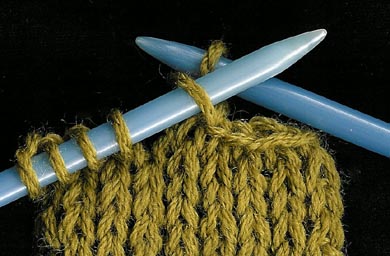
1: When casting-off, it’s all too easy to make the slipped
stitch too tight.
Casting off occurs at the beginning of an
armhole, the neck, the shoulder, the top of a sleeve, a cuff or when
you have finished the piece you have knitted.
To be able to work a pliable seam involving the cast-off row, make
sure that when you have finished this important row, it has a
certain amount of stretch in it. Quite often, knitters cast off too
tightly, and the resulting edge is distorted because it doesn’t have
as much width as the row of stitches below the cast-off row [pic
2,3,4].
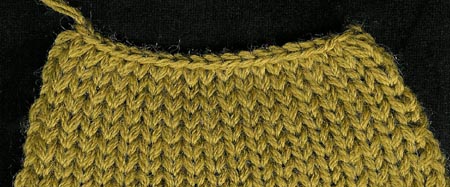
2:
This tight cast-off row will cause
problems when joining the garment.
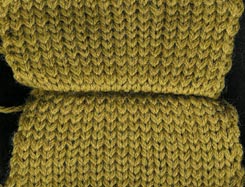
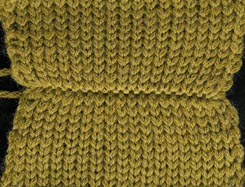
3: (left) Two tight cast-off edges distort the shape
when joined.
4: (right) Ironing doesn’t even help.
When this is the shoulder seam, the neck can
be pulled out of shape, the top of the sleeve may pull into a point,
the shoulder seam stitches will look cramped, or the fabric around
the shoulder area may balloon [pic 5].
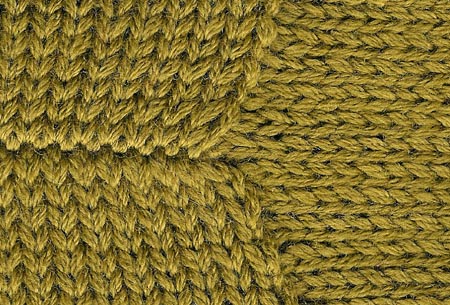
5: The distorted seams pull added knitting (such as a
sleeve top or a rib edge) out of shape.
NEXT
PAGE >> chapter
page: 1 | 2 |
3 |